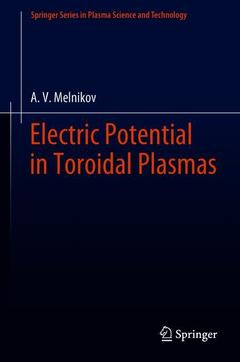Electric Potential in Toroidal Plasmas, 1st ed. 2019 Springer Series in Plasma Science and Technology Series
Auteur : Melnikov A.V.

This work introduces heavy ion beam probe diagnostics and presents an overview of its applications. The heavy ion beam probe is a unique tool for the measurement of potential in the plasma core in order to understand the role of the electric field in plasma confinement, including the mechanism of transition from low to high confinement regimes (L?H transition). This allows measurement of the steady-state profile of the plasma potential, and its use has been extended to include the measurement of quasi-monochromatic and broadband oscillating components, the turbulent-particle flux and oscillations of the electron density and poloidal magnetic field.
Special emphasis is placed on the study of Geodesic Acoustic Modes and Alfvén Eigenmodes excited by energetic particles with experimental data sets. These experimental studies help to understand the link between broadband turbulent physics and quasi-coherent oscillations in devices with a rather different magnetic configuration.
Thebook also compares spontaneous and biased transitions from low to high confinement regimes on both classes of closed magnetic traps (tokamak and stellarator) and highlights the common features in the behavior of electric potential and turbulence of magnetized plasmas.
A valuable resource for physicists, postgraduates and students specializing in plasma physics and controlled fusion.
Foreword by S.E. Lysenko.- Preface by A.V. Melnikov.- List of Abbreviations.- Frequently Used Symbols.- Introduction.- The Heavy Ion Beam Probe Diagnostic and Applications.- Radial Profiles of the Plasma Potential in Ohmic Regimes and L-mode Plasmas.- Characterization of the Quasicoherent Oscillations in the Plasma Potential.- Evolution of the Plasma Potential during Transitions to Improved Confinement Modes.- Conclusions.
Date de parution : 04-2019
Ouvrage de 240 p.
15.5x23.5 cm



